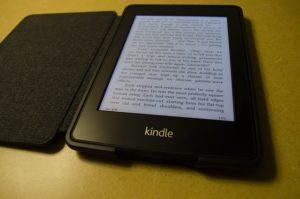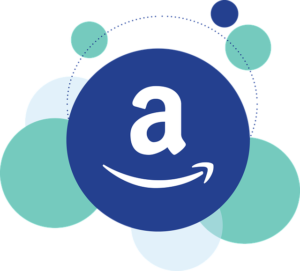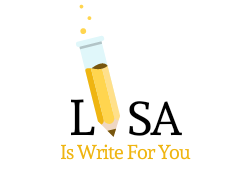If you have written a book the next question you may be asking now is- how to publish a book. Unlike years ago, in today’s world, there are many options that exist that allow aspiring authors to publish their works of art for the world to read. Traditionally, many have gone through publishing companies to get their books on the shelves and in front of readers but today, there are cheaper and easier routes to go that could yield the same success.
Publishing A Book- The Traditional Route

So, you have finished your masterpiece. The final word is laid out on paper and your manuscript is ready for review. The question now is… what’s next. Not too long ago, the only next would be to go and hire an agent to get a publishing house to even look at your manuscript. The agent would act as a representative of the author who would negotiate a potential book deal with the publisher, hopefully, one of the Big 5. If a deal is made, the agent would receive a percentage of book sales for their part in the contractual agreement.
This deal would do two things. First, landing a traditional publishing deal would give the publisher a percentage of all sales of that book going forward as long as that book is in print. For the author, this deal would usually mean receiving an advance of the book to lock down the deal. Typically, this advancement for new authors would range between $1,000- $10,000 depending on the publishing company and the book’s marketability. The author would have a set time to have the book written but would not see any proceeds of the sale of that book until the advance is repaid in full.
Once paid, the author would then begin to receive a portion of royalties from book sales. Remember, some go to the agent, who usually takes about 15%. The publisher, which typically varies and is based on the format and size of the book. Lastly, the author usually takes around 10% of physical book sales and approximately 30%-40% of E-book sales. Also, depending on the marketing and promotional needs, a cut may be taken out for that as well under the discretion of the publisher.
Secondly, the book deal would give the publisher complete rights to the author’s manuscript, in other words- it would turn over control from the author to the publishing company. That control could be over a number of things from content, book design, when that book goes out of print, and how many books will be included in the first print. However, there are some publishing companies that do allow authors to maintain some control.
The publisher would also have complete rights to use funds as they see fit for marketing and promotional purposes. Simply put, the publishing companies will have the final say and absolute control over everything so be cautious if you go this route. Remember, this was your story and creative design. Publishing a book the traditional way can turn into a very tiring, frustrating, and even an expensive ordeal that has discouraged many highly potential authors away from their dream. Moreover, out of the thousands of submissions to publishing companies, only about 1% of authors successfully land a book deal. Talk about frustration.
Also, if the author isn’t savvy in this business and does not have a lawyer to look over the fine print of the contract. Or, that does not have an agent to fight and negotiate solely on the behalf of the author as they should, he or she could be taken advantage of in the dealings of their work and proceeds owed. Research and caution are highly advised when dealing with traditional publishing companies. They are not all on the up and up and as we continue to learn, they are not the only ones who know how to publish a book.
Publishing A Book- Self-Publishing Route

Knowing how to publish a book seems to be only a skill that is held by a secret group of people behind large dark doors. The process seems to act as a fraternity, sorority, or some other secret society organization that only accepts a certain group of people to be among their secret family. “An elite group” that is among the top one percent of people that submits an application.
Luckily, that is no longer the case and luckily, no agent or publishing companies are needed for you to publish your book! Simply put, authors can now cut out all the middlemen grabbing at their money. Moreover, we no longer have to worry about being “accepted” in order to succeed. Learning and knowing how to publish a book is not only for the faceless people behind closed doors.
Publishing a book has become such an easy process that almost anyone can do it. With that said though, there are some cons associated with becoming a self-published author over going the traditional route, but there are also many pros as well. Before we move on, let’s take a look at some differences between the two.
Traditional Publishing: Pros
- Team of Editors & Other Professionals
- Deadlines Handled
- Agents That Act on Your Behalf
- Cash Advances
- No Upfront Cost
- Assistance With Marketing Efforts
- Wider Range of Visibility
Traditional Publishing: Cons
- Royalty Rates Significantly Lower
- Typically a Long Process
- Author Loses Creative Control
- Author Loses Rights
- Difficult to Get Accepted
- Complicated Contracts
- Pay Is Typically Twice A Year
Self-Publishing: Pros
- Complete Control of Book(s) Outcome
- 100% of Royalties
- Complete Control of Books Design
- Quicker Process
- Zero Rejection
- No Deadlines to Meet (Other than your own)
- More Frequent Pay Days (Monthly vs. Twice a Year)
- Royalty Rate Significantly Higher
Self-Publishing: Cons
- Upfront Cost (ex: Proofreader, Editor, Cover Designer)
- No Instant Team
- Possibility of Financial Loss
- Zero Agent Support
- Zero Marketing
- No Visibility Resulting in Limited Reach
- Stigma That Comes with Self-Publishing
Amazon Self-Publishing

Amazon is to authors what Uber is to commuters… a godsend! For myself, I have six books published on Amazon’s Kindle Direct Publishing platform or KDP for short, and I will soon have number seven submitted as well. Sadly to say, without this platform and the support that it provides, I may have never gotten any of my books in front of my reader’s eyes and based on my monthly sales, my stories are indeed reader worthy.
Although traditional publishing sounds nice with all the perks and advancements, I am grateful for the option of the Amazon self-publishing platform. Not only does it provide immediate satisfaction and cuts out all the middlemen, but more importantly- it allows authors that have been overlooked by publishers and publishing companies a chance for success in this field. It also breathes life into their dreams of publishing a book and learning how to publish a book come true.
With the ability to reach millions of readers worldwide through Amazon self-publishing, I would challenge some of the cons that have been associated with this form of publication, especially visibility and team support. With Amazon self-publishing, the author is allowed to take control of their work and have access to many options of the different forms of publication absolutely free of charge!
Publish to Kindle

With Kindle Direct Publishing or KDP, the author can earn up to 70% of digital book sales! Publishing your book(s) is free of charge and is available for sale to customers in the U.S, U.K, Germany, and countless other countries. With this option, your book can be published within minutes and will appear on Amazon’s website usually within 48 hours and in multiple languages if you like. The digital version of your book can be sold worldwide with the options of free Kindle reading on all Kindle devices.
Publish to Print

As an independent author, you can earn royalties of up to 80% of your print-on-demand book(s)! Furthermore, the best news of all is… you are not alone! Learning how to publish a book could not be easier with the free publishing services to help build and design your work of art like Createspace which is available on the Amazon self-publishing platform.
With the publish to print option, you can reach millions of readers across the globe via Amazon.com and its European websites. Publishing a book is simple. Once you upload your finished manuscript and your work is approved (typically 48 hours)- Amazon will print, package, and ship your book when orders for your print book is requested by your customers.
Amazon keeps a percentage of the royalties to cover printing cost and the rest of the royalties will be on their way to you!
Publish to Audio

Another amazing publishing avenue through the Amazon self-publishing route is to publish your book(s) via Audiobook Creation Exchange or ACX. When you sign up with ACX, you will easily obtain access to narrators and even studio professionals that are ready to bring your book to life!
When publishing to audio, the potential for earning high royalties is certainly a possibility whether it be for exclusive distribution (contractual agreement giving only specific retailers or individuals the option to carry product or services) or non-exclusive distribution (contractual agreement allowing a business or individual permission to make a product or service available for consumers use. However, other businesses or individuals also has the same right).
The options for selling your audiobook are limitless- making its reach and visibility almost effortless. From Audible.com, Amazon.com, and iTunes, as an independent author through Amazon’s audio self-publishing platform, anyone has the option to sell through many online high-ranking retailers.
Stigmas with Self-Publishing

This article has hopefully shown that when it comes to publishing a book, there are now many other options available than trying to land a deal with traditional publishing companies. Knowing how to publish a book is not a skill held by only a select few anymore- anyone can do it with a little time and patience.
Although Amazon isn’t the only self-publishing platform, it is by far one of the most popular and widely used for both readers and authors. However, no matter the self-publishing platform you choose, there is a stigma that comes along with this form of publication. It is important as a self-published author to know some of the hurdles that you may be up against in order to face them head-on.
No matter how good your book is, or how beautiful your professional cover is, or how much you spent on an editor- the truth is… no one knows you yet. Your title is not on the bestsellers list, and you do not have many reviews under your belt. The latter could simply be that people buy your books… read your work but just don’t take time to leave a review. I can personally attest to that. My book sells outweighs my reviews tremendously, so… with that said… just keep writing, the reviews will come ?.
So, what are some of the stigmas that come along with self-publishing? Let’s take a look at some beliefs and questions that are not associated when published with traditional publishing companies.
1. “Self-Published books are not real books.”
Of course, self-published books are real books. Luckily, the belief that only that mysterious editor behind those large dark doors can magically make your book worthy enough to read is fading fast. Not only are self-published books real, but they are becoming very popular among millions of readers which in itself proves that this version of a publication is very real indeed.
2. “Self-published books are low quality.”
Ok, so… some traditional publishing companies also put out less than stellar work. But let’s not go tit for tat. Ultimately, as with everything else- the amount of work and effort that you put into something is what you will get in return. Traditional publishing is not superior to self-publishing, the same tools that are available to them are available to self-published authors.
The difference is, as self-published authors, we are in some sense of the word… alone. Publishing a book is an added expense and time that we must expect; unless we have the knowledge of editing and proofreading our own work as must of us have the ability to do, just maybe not the time always, so hiring an editor or a proofreader may be the best course of action. So, as you can see- although having an instant team of creative designers, editors, agents, and proofreaders that normally comes along with traditional publishing would be like heaven- it is not necessary, not anymore.
With the many professional publishing platforms like Createspace, which merged with the Amazon self-publishing platform KDP in 2018- an independent author can successfully make his or her own personal and professional space in this field- producing high-quality work and cut out the middlemen that come with traditional publishing companies. Remember, all that luxury comes at a cost.
3. “So… your not actually published?”
The assumption that a self-published book is not a published book is due to the lack of knowledge- ignorance if you will to this form of publication. Whether you go through Amazon self-publishing, Smashwords, Bookbaby, or LuLu Press- your work is published. The belief that if it does not go through a publishing house then it is not published or acceptable is just not the case.
4. “Traditional publishing companies rejected your book so no one else would want to read it.”
Again, just not the case. Publishing companies are rejecting books across the globe at a staggering rate while only accepting about 1% of all submissions! ONE PERCENT! So are we to believe that 99% of manuscript submissions are so terrible that they are not worthy of being on bookshelves? And are we to also believe that 99% of authors just give up at a “NO” or a rejection letter? Of course not!
If you applied for a job, went in for the interview and two weeks later you received a rejection letter stating that the company went with another applicant- would that mean no other company would want you or would want to invest in you? Of course not, so the same applies. Just because you receive that dreaded rejection letter does not mean there is not a place for you as a self-published author or an author in general. It just means that the publishing company missed out on a great opportunity just like that company did with you.
It is also important to understand that many people choose to go the self-publishing route for freedom and absolute control of their work. Not to mention the higher royalties and creative design that also comes along with it. Self-published authors are on the rise and authors are being noticed. Our works appear right alongside traditionally published authors on the New York Times Best Seller’s Book List as well as on the shelves of some of the best retailers.
I would not go as far as to say that traditional publishing is outdated- yet, but I would say it is now becoming a bit overrated. Once Blockbuster and payphones were the best things since sliced bread. Soon, self-publishing will be to traditional publishing what Netflix is to Blockbuster and cell phones are to payphones. A takeover.
5. “Who are you? No one has even heard of you or your books.”
Who was known before they were known? Riddle me that. Nora Roberts wasn’t known before she was known. Neither was Stephen King, J.K. Rowlings, John Grisham, or James Patterson just to name a few. They did not always know how to publish a book, but they made a name for themselves eventually. My answer to this? Market! Market! Market yourself! You now know how to publish a book- now put yourself in the public’s eyes. In today’s world, it does not take a genius or a rocket scientist to learn how to use the many free tools available to us to get your name out there!
Between Facebook, Instagram and Twitter, you could reach millions daily if done correctly. How many people have become insta famous due to these platforms? As a self-published author, you have to rely on yourself so it is essential to learn about the tools that will help your craft blossom. Take advantage of running ads that will specifically target a specific audience. Yes, that’s money but sometimes you have to spend money to make money…
Build a website promoting your work and move the traffic from your ads and social media traffic there and link them to your work. Design business cards, hold book events at your local library or book store, associate yourself with like-minded individuals, research famous authors- read their stories. What did they do? Get yourself noticed! Get out your box! Hussle until people automatically know your name and who you are as many others have successfully done! Knowing how to publish a book is one thing but selling it is another so go out and sell yourself and your work.
Conclusion
Don’t let the stigmas of self-publishing detour you from your dream. You are not inferior and traditional publishing is not superior. Luckily, because of the success of self-publishing, these bias stigmas are fading just like the need to be accepted by a publishing company to be a successful author.
Amazon Publishing

So, good news if you still choose to stick with traditional publishing even though you know how to publish a book yourself through Amazon self-publishing. It does not have to be a catch 22 if you are absolutely in love with Amazon’s culture- you can have the best of both worlds with APub. Amazon Publishing or APub is not to be confused with KDP. Instead, Amazon Publishing was founded in 2009 and acts as a traditional publishing company, unlike its self-publishing platform.
With that said, all 16 of its imprints or genres conform just like those in traditional publishing companies. And just like a traditional publishing company, if you were to be signed with Amazon Publishing, they would obtain rights to your work, offer advances in some cases, and would, of course, take a percentage of your royalties.
16 Imprints
Let’s take a look at the different types of books that is available to an array of audiences through Amazon Publishing:
- Amazon Publishing: General fiction and non-fiction that embraces many genres
- Amazon Encore: Out-of-print work is published with this imprint
- Amazon Crossing: Consist of award-winning and best-selling books that are published in translation in the U.S.
- Amazon Crossing Kids: Amazon Crossing’s sister that translates children’s books into English
- Montlake Romance: Romance novels
- Amazon Original Stories: Consist of short fiction and non-fiction
- Lake Union Publishing: Contemporary and historical fiction. This imprint also includes memoirs and popular non-fiction
- Thomas & Mercer: Thrillers, true crime, and mystery novels
- 47North: Fantasy and science fiction
- TOPPLE Books: This genre focuses on LGBTQ writers, women of color and gender variance, or gender non-conforming
- Little A: Literary fiction and non-fiction
- Skyscape: Teen and young adult
- Two Lions: Children’s books for up to 12 years of age
- Jet City Comics: Graphic novels and comics
- Grand Harbor Press: This inspirational genre covers self-help while helping with personal fulfillment and growth
- Waterfall Press: Christian fiction
How to Get Signed By APub

Getting signed by Amazon Publishing can be as simple as publishing a polished manuscript with a professional cover design that generates lots and lots of sales via the Amazon self-publishing platform KDP. Enough to get noticed by Amazon’s publishers and editors.
An author whose book has made a mark on Amazon’s platform in popularity and sales will have a great chance of gaining the attention of APub. If approached by APub’s team, the author may be given an offer to release the rights to APub for them to release the book. A contract may also be offered to the author to continue to publish future manuscripts. The latter typically happens in the case of a series that has proven to be doing well among readers.
As with any other publishing company, luck plays a major role in landing a deal with APub. Even some of the best books are not picked up by APub so to keep your chances high, it is important to invest as much as possible in your product to bring the highest quality book to market that you can.
You can have the knowledge of knowing how to publish a book but if not done correctly- unfortunately, that may all that will happen. Learning the ins and outs of this hard to make it field is essential in your success. Understanding how to market your book and being open with working with or hiring designers and editors will give you the edge needed to climb to the top of the ranks to get noticed.
After Signing with APub
After signing with Amazon Publishing, the hard work will now fall in the hands of their very developed and professional team of publishers, editors, and designers. Signing with Amazon comes with significant pros over other publishing companies. Marketing is essential to book sales and the professionals at Amazon have that inside knowledge needed to boost those sales.
As an indie, or independent author, having access to promotions and visibility would prove to be hard if not impossible- but for the professionals at APub, their access is instantly granted. As with anything, being published with Amazon has its cons. One of those cons is receiving fewer royalties than going with the Amazon self-publishing route.
Knowing exactly what authors receive in royalties with APub is difficult to find since they must sign non-disclosure agreements, but research has shown that the payoff is similar to the industry standard of other publishing companies.
However…
Of course, there are a few cons to being published with APub. For some, the sacrifices may not be as important as they may be to others- it all depends on your goals and how far you are wanting to go with your writing career.
For the exception of big-box retailers like Walmart and Costco for example, if your goal is to have your books line the walls of Barnes & Noble or The Strand in New York City- you may be disappointed if signed with APub. The reason is, unfortunately, self-published books are very rarely if at all considered to be placed in traditional bookstores.
Lastly, another con that may cause some unease is your name will not be on the New York Best Seller’s List- one of the most prestigious lists any author would want to be a part of. If signed to APub, your books would be exclusively sold within its own channel and since NYT does not count those books, yours would be left out. The upside to that though is, you could possibly make Amazon’s bestsellers list! That in itself would be deserving of a night out to celebrate.
Conclusion
So, now you have some knowledge of how to publish a book- or books if you plan to get down to business. The question of the hour now is… how are you going to publish those wonderful works of art? Both traditional and self-publishing has its benefits and each also has their share of disadvantages.
After reading this article, which hopefully has been helpful and doing some further research of your own, I am sure the correct decision will be made. Traditional publishing companies certainly have, and will continue to have for some time a spot in the literary world. However, so does self-publishing and thanks to Amazon self-publishing and its platform- KDP, indie authors are continuing to make an enormous mark in the literary world as well.
So, what would it be like to be published by Amazon…?


